Cargo jeans with a reddish-pink graphic tank top. A sleeveless yellow caftan patterned with psychedelic floral designs. An upcycled blue button down paired with green army pants. A colorblocked tunic top styled with flowing metallic bottoms.
These outfits cover an array of colors, fabrics and styles, but they all have one uniting factor: Each is composed of hand-chosen sustainable clothing items.

Yamini Ulaganathan wears a sleeveless caftan titled “Fertile Grounds,” which features psychedelic designs of purple peacocks and flower motifs cast against a yellow backdrop. This piece, inspired by Persian cultural heritage, celebrates the peacock as a heavenly abode.
According to a 2019 report from the United Kingdom’s House of Commons Environmental Audit Committee, clothing production is the third largest manufacturing industry in the world, contributing more to climate change than international aviation and shipping combined.
After recognizing the fast fashion industry’s harms — sacrificing sustainability to mass-produce cheap, trendy clothes — some Northwestern students have started rethinking their consumer habits. Instead, they are shifting their interest to slow fashion, a growing consumer movement that emphasizes quality over quantity, reduced environmental impact and awareness of the resources and processes that go into producing clothing.
Slow fashion proponents advocate for the fashion market to move away from practices that exploit people, animals and the planet. They prioritize conscious consumerism through reducing the number of clothes one purchases and discards. This can take the form of rewearing, repurposing and reselling clothes.
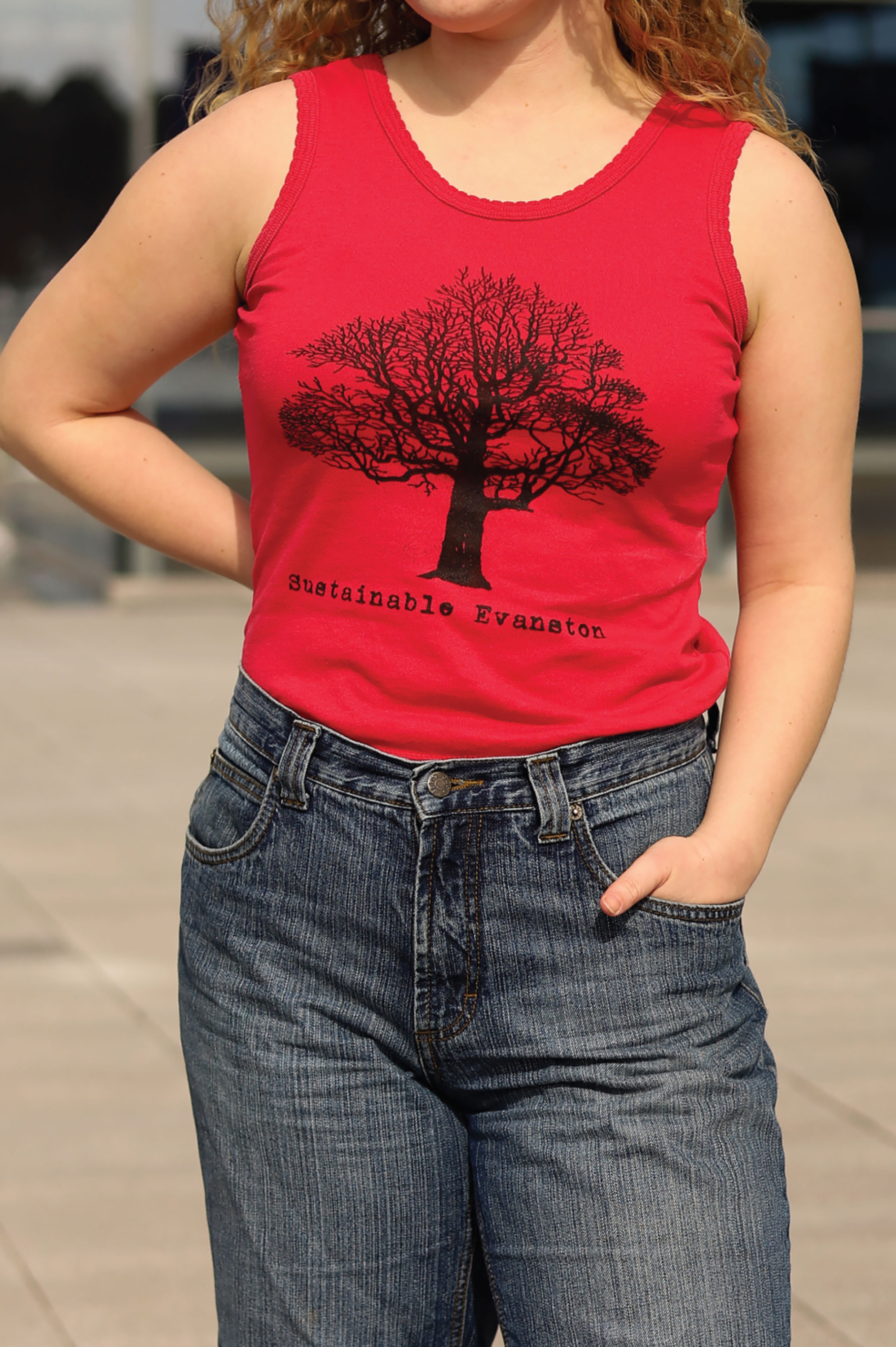
Screenprinted shirt with an original design by Gilman, with the help of his girlfriend, a student at the School of the Art Institute of Chicago.
Kellogg Professor of Management and Organization Brayden King, who studies corporate social responsibility, says community building is integral to creating a market for slow fashion. He says communities help create demand, as they allow people to discuss their values and hold one another accountable for their market choices.
“Creating a venue for people to come together is probably the most important thing,” King says. “Even though we think of consumer choices as very individual-oriented, it’s kind of the opposite.”
Whether through friends with shared interests or student organizations, Northwestern students have found communities to explore slow fashion. Many students shop sustainably as a way to both make small changes to protect the environment and express their individuality through fashion.
Building a brand
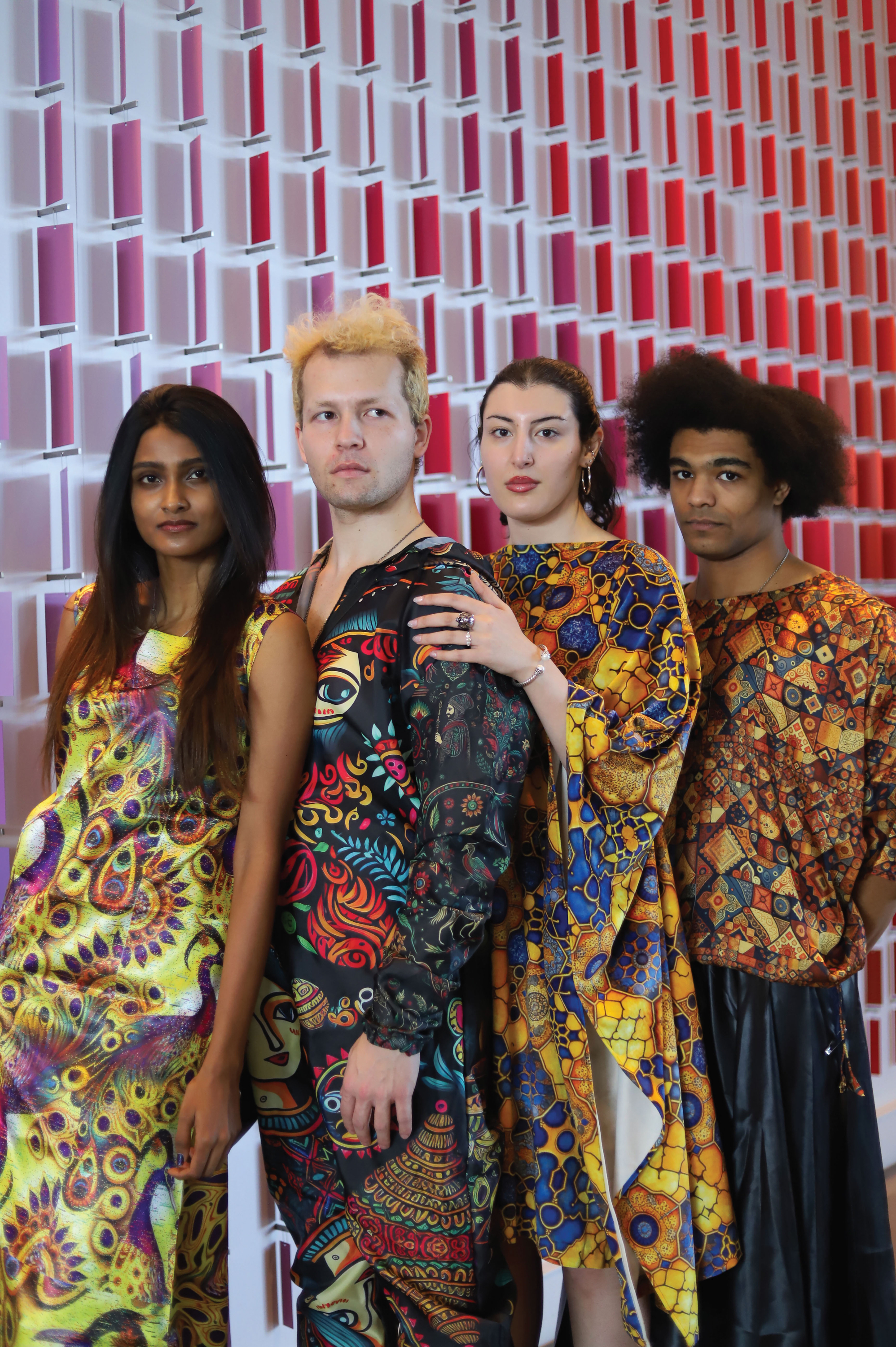
Pieces from “Return to Us,” Naranji’s latest collection, showcased in New York Fashion Week.
McCormick and Communication fourth-year Sahibzada Mayed grew up in Pakistan and says they’ve seen firsthand how exploitative and environmentally damaging Western fashion can be. They have watched brands outsource their production to Pakistan and other South Asian countries, leaving flawed clothing and waste behind.
While Mayed says they have always made an effort to consume consciously, they have recently looked more closely at creating more humane and ethical clothing.
Mayed launched their own clothing line, Naranji, at last year’s UNITY Charity Fashion Show, an annual student-run event at Northwestern. Since the brand’s launch, Mayed’s team has grown to four people, occupying roles such as community engagement director and brand strategy director. Naranji was featured at Asian Fashion Show Chicago and RISE at New York Fashion Week.
Naranji features empowering designs and prioritizes ethical production methods, with all items made to order or produced in small batches. While this may mean a longer wait on the consumer side, it limits waste.
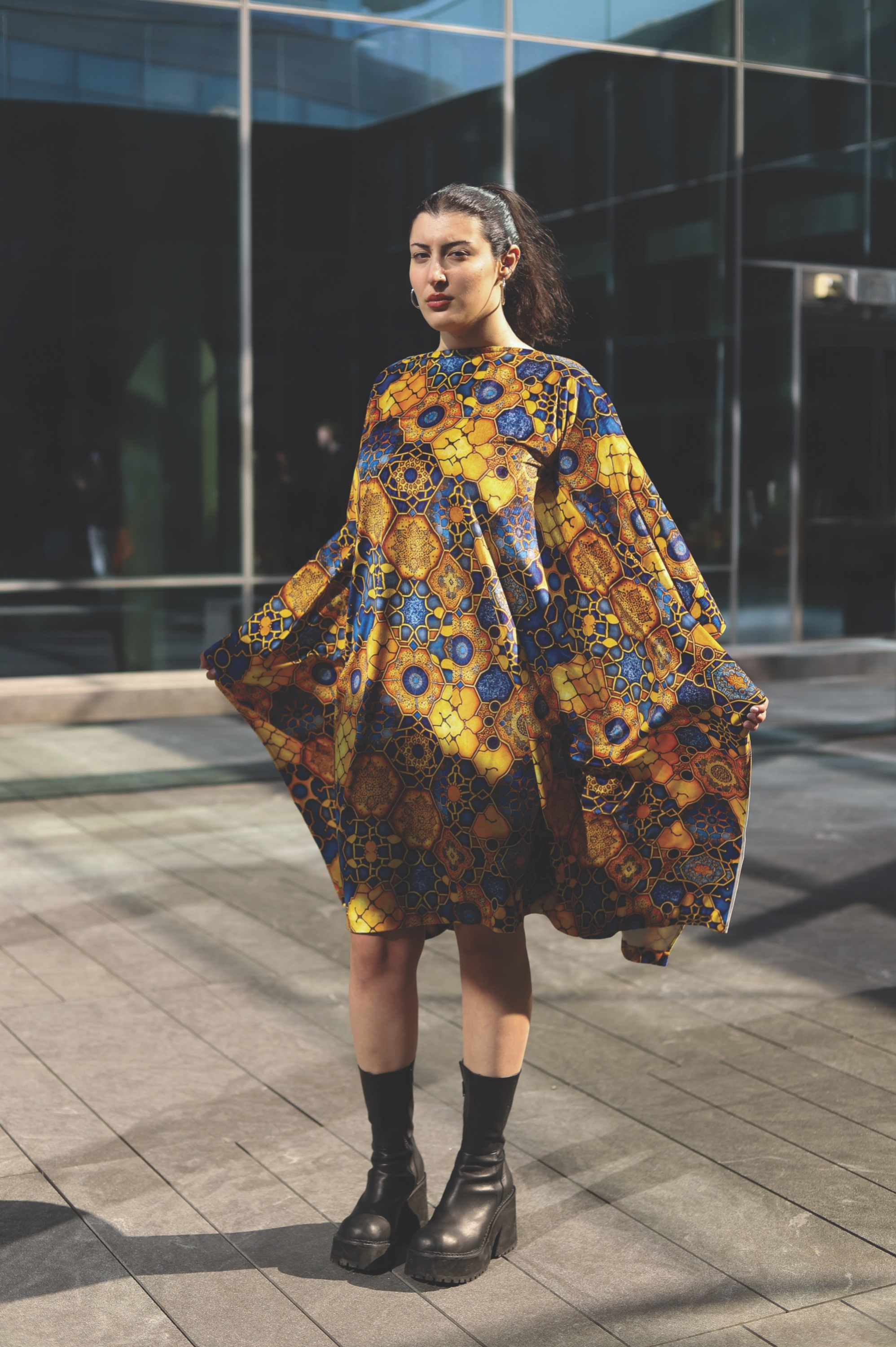
Maya Shadid wears a velvety shawl with pops of blue and gold that resemble stained glass tile inspired by Islamic architecture. This piece, titled “Queen of the Sky,” will “teleport you to majestic heights.”
The brand’s clothing is produced by environmentally-conscious manufacturers in locations including Lahore, Pakistan. Mayed and their team employ local artisans for garment printing, digital printing, stitching and embroidery and incorporates locally harvested materials. By doing so, Naranji is further supporting local industries and preventing the carbon impact of shipping.
Another focus of Mayed’s brand is gender diversity. Naranji doesn’t use gender labels for its clothing, and pieces are styled across genders. For Mayed, this connects to sustainability.
“We’re consciously trying to think of who is wearing these clothes,” Mayed says. “I think once we started doing that throughout the process, there was a lot more intentionality in creating the garments.”
Stitching a sustainable community

Lebeck and Bentele model Shorr’s clothing (left) and Gilman’s clothing (right).
SESP fourth-year Lucia Shorr was involved in social justice organizing in high school and found sustainable fashion allowed her to incorporate her activism into daily life. Soon, stopping at the thrift shop, L Train Vintage, on her way home from school became a frequent occurrence.
Shorr is now dedicated to slow fashion and has made it her mission to shop as sustainably as possible. For her, this means buying secondhand and from brands whose missions and practices align with her values.
“I’m interested in working in a sustainable fashion space, so it’s also been a passion project of mine for the last number of years to research different brands and do my best to shop from ones with values and material processes that I believe in,” Shorr says.
In 2021, Shorr and her friend, Weinberg fourth-year Leo Gilman, launched Sustainable Evanston to fill a niche in Northwestern’s slow fashion market.
At first, Shorr says Sustainable Evanston was an accessible way for her and her friends to sell their used clothing. But the club quickly gained popularity. Shortly after its founding, Sustainable Evanston collaborated with the student organization Students Organizing for Labor Rights (SOLR) and donated 20% of their profits to the SOLR mutual aid fund. In 2021, they hosted their first pop-up to raise money for SOLR, and in May 2022 they hosted their first fashion show, complete with a live DJ.
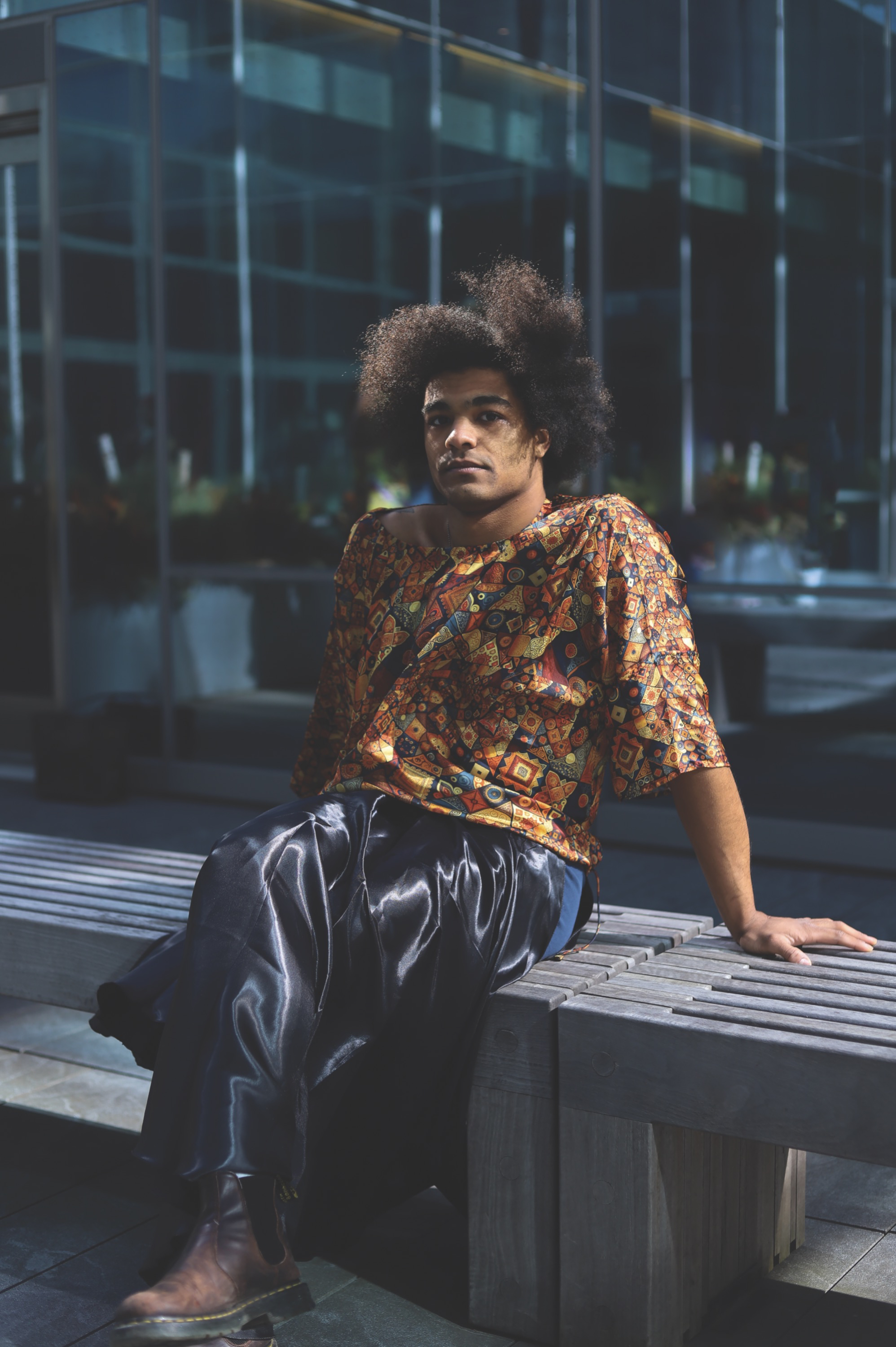
Kiyro Flamer-Caldera wears a silky tunic outfit featuring a collage of asymmetrical tiles with fine patterns and shapes in warm tone colors, reminiscent of artisanal block- printing. The piece titled “blockED” comments on how the diverse ancestral histories we possess cannot be “boxed” into colonial legacies.
Gilman says Sustainable Evanston has also fostered the growth of a community, the type that’s important for emerging markets like sustainable fashion to gain a large following.
“Especially with social media, we see so many clothes every single day, and it’s really easy to just buy stuff from fast fashion,” Gilman says. “[With Sustainable Evanston] it was all on campus, so people could really get into sustainability and fashion, and then by extension, it formed a little bit of a community.”
Slow fashion in action
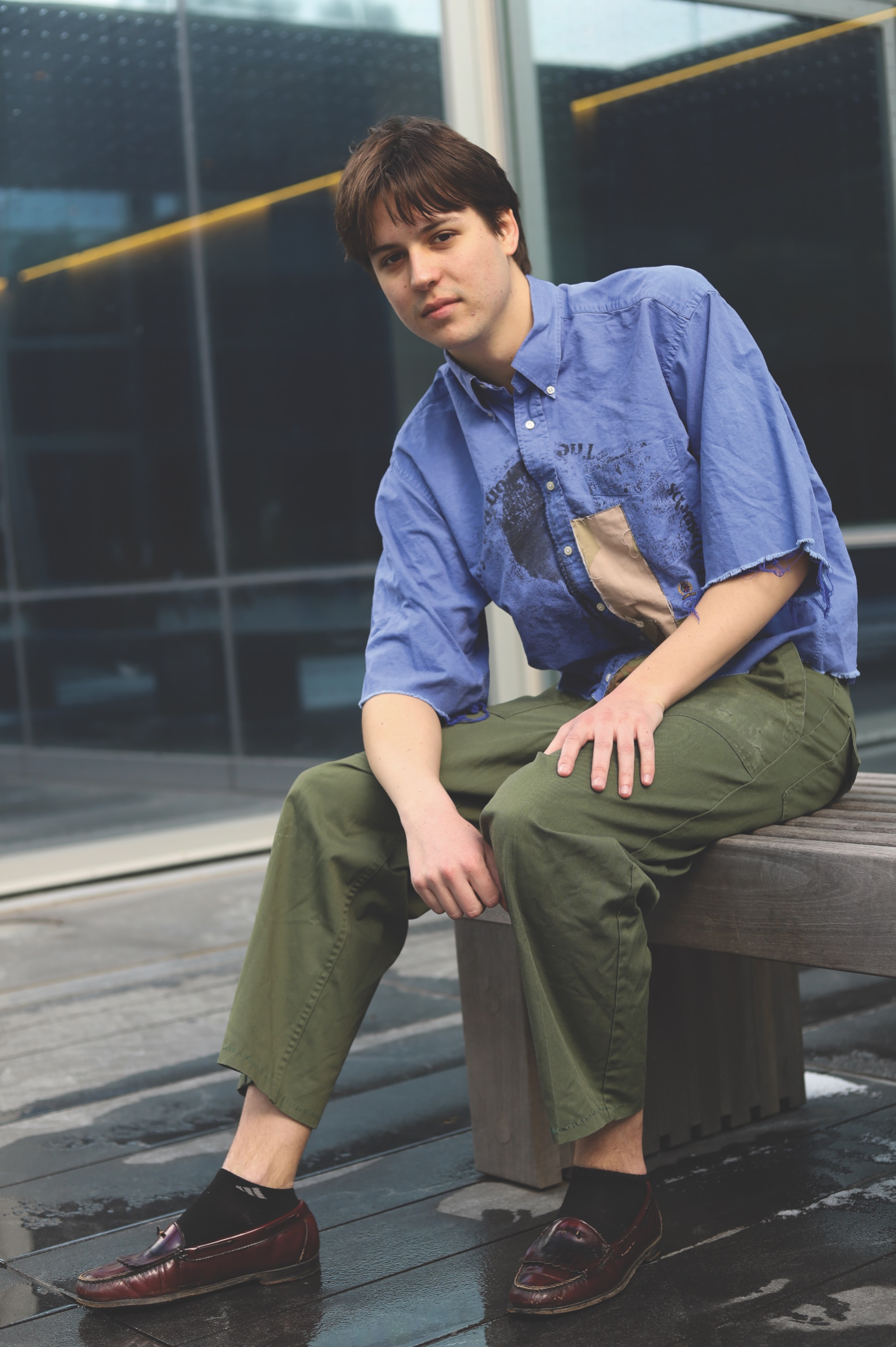
Alex Bentele wears a shirt from a vintage pop-up in Austin, Texas and vintage pants from the 70s from Kokorokoko in Chicago, Illinois. Styled by Leo Gilman.
Bienen fourth-year Louis Milne says he grew up with a sustainable mindset. His mom prioritized hand-me-downs, and when the budget his parents gave him wasn’t enough to purchase clothes from the mall, he would thrift. His family often went to a charity shop around the corner from Milne’s home.
“We would go there every week to just look [around] and find stuff,” Milne says. “I think it largely comes from the culture of my family.”
Since coming to college, Milne says shopping secondhand allows him to dress stylishly while remaining within his budget.
Weinberg fourth-year Eliana Zuckernick first served as Sustainable Evanston’s community coordinator. Now, she helps grow Sustainable Evanston’s community by posting content to the organization’s Instagram page and planning upcoming events, and she hopes to start a monthly newsletter. Zuckernick appreciates the personal connection that exchanging clothing fosters.
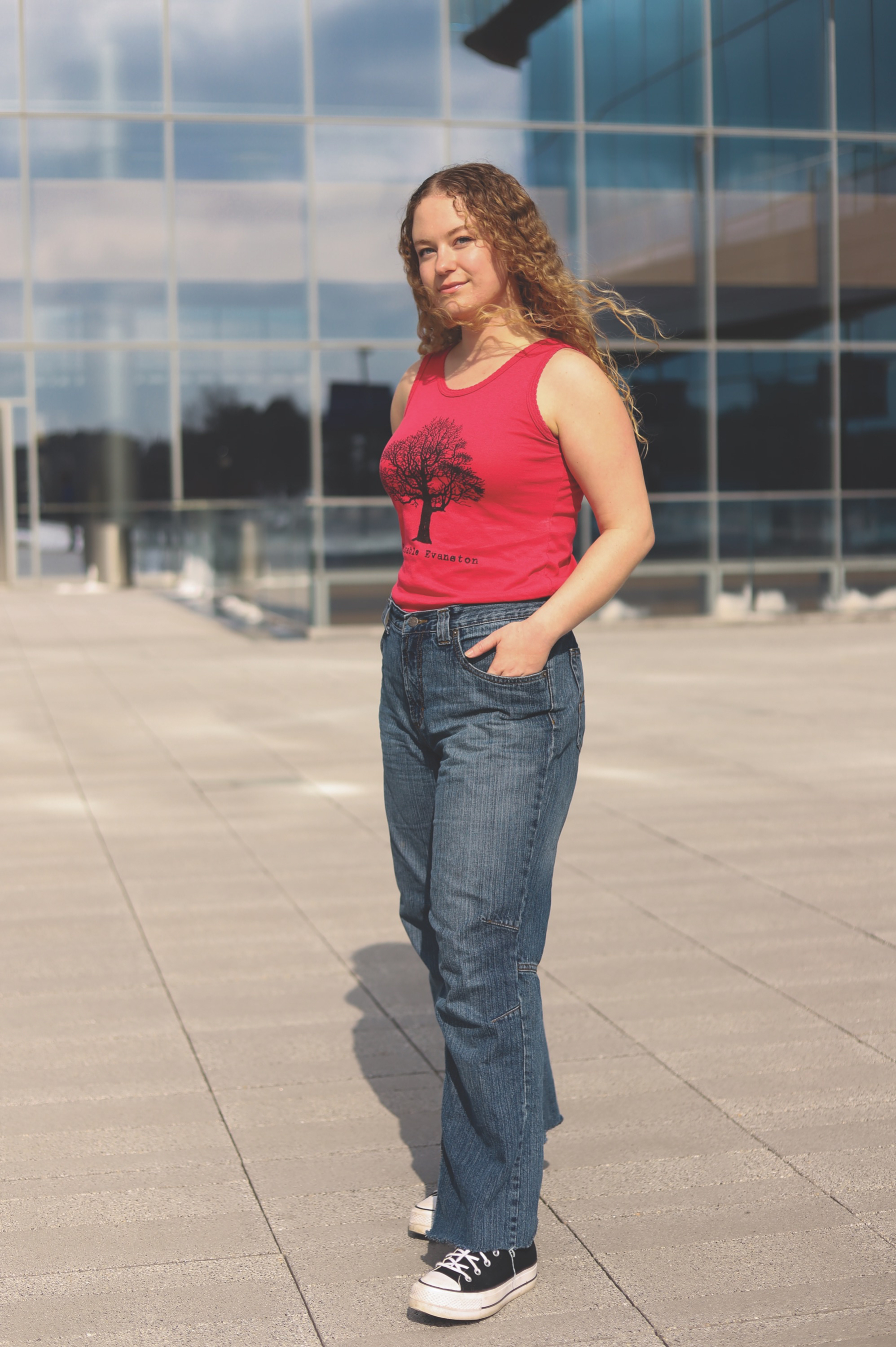
Sam Lebeck wears jeans thrifted at Mosaica, a Spanish chain thrift store, and a screenprinted shirt that was donated to Sustainable Evanston. Styled by Lucia Shorr.
“You know those pieces in your closet that you don’t want to get rid of because you used to love them and now you’re just tired of them, even though you still like them? It’s nice when your friends can wear them and continue the tradition,” Zuckernick says.
Zuckwernick also believes one of the best ways to educate others on sustainable fashion is to wear it. When people compliment her outfit and ask where she got a clothing item, she says her response of “I got it from Sustainable Evanston” is the best publicity.
Milne says his favorite way to introduce people to the joys of secondhand fashion is to take them thrifting.
“It’s such a fun way of introducing sustainable fashion without being sort of preachy,” Milne says.
Showing off sustainability
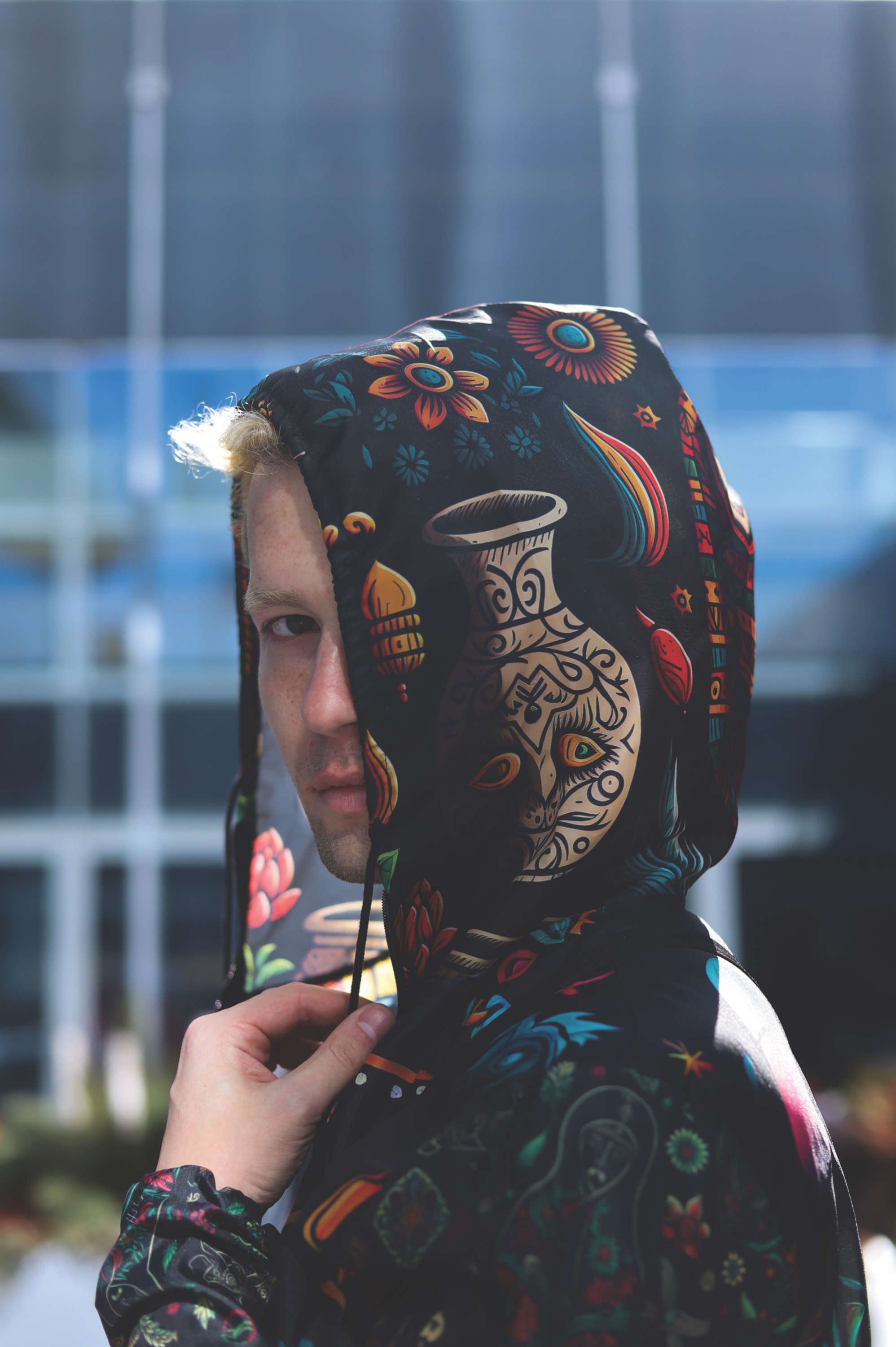
Grayson Willenbacher wears a streetwear-style jumpsuit featuring intricate designs resembling Mughal illustrations and a blend of orange, blue and yellow motifs.
As the slow fashion community continues to grow, part of the movement’s appeal is the way it — unlike fast fashion — allows wearers to exude individuality through distinctive clothing pieces.
“I love thrifting and used clothes and having that as a method of finding your own style,” Milne says. “It’s such a unique way of creating your own aesthetic.”
Gilman agrees, saying thrifting provides him with a one-of-a-kind wardrobe.
Shorr says the process of cultivating an individual style through thrifting is increasing popular. Despite her disappointment with how society has failed to prioritize climate change, she hopes the increasing demand for slow fashion will help facilitate a slower fashion industry, which could curb wasteful production and overconsumption.
“I would hope that in the coming years, fewer companies are producing clothing and there is an emphasis on re-working used materials and limiting production,” Shorr says. “I do not necessarily expect this to happen. But a girl can hope!”